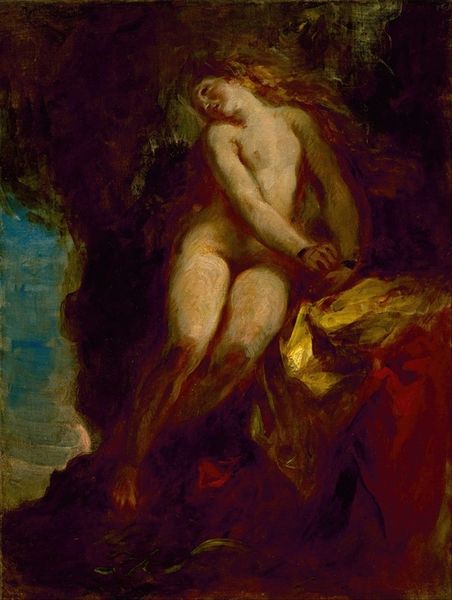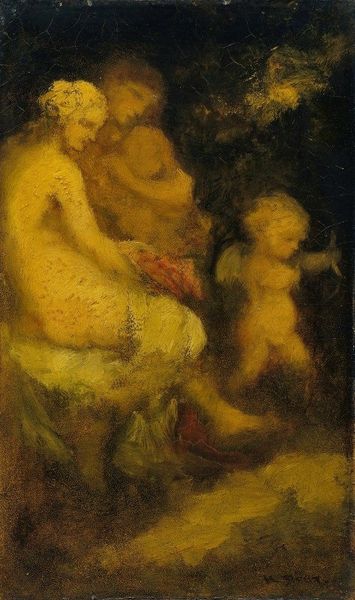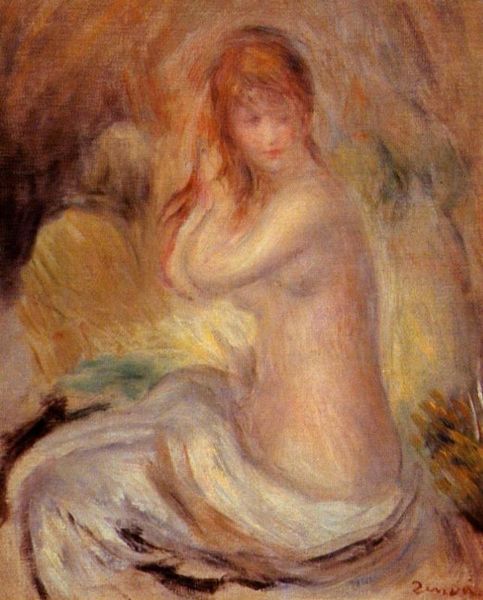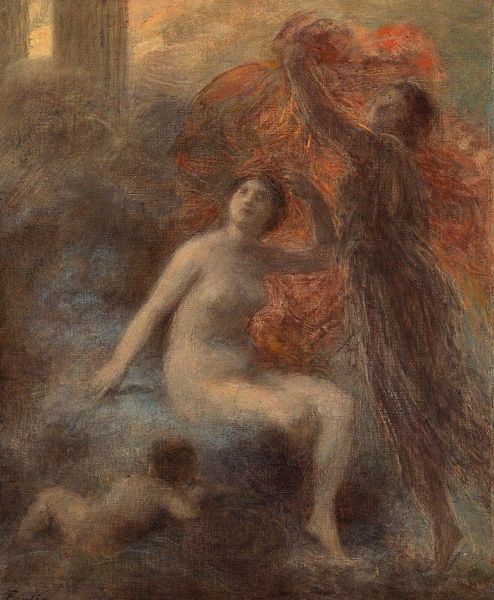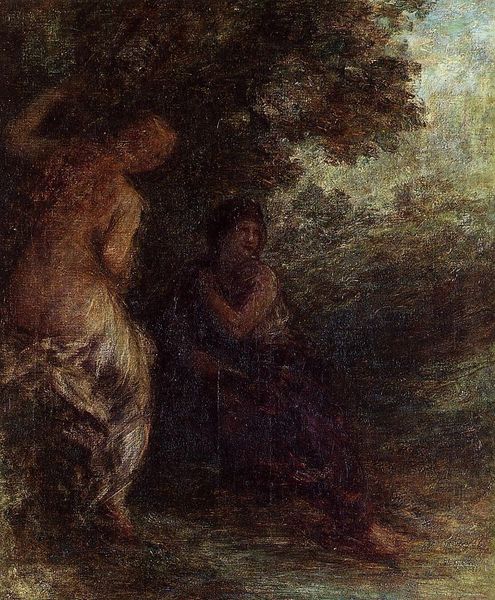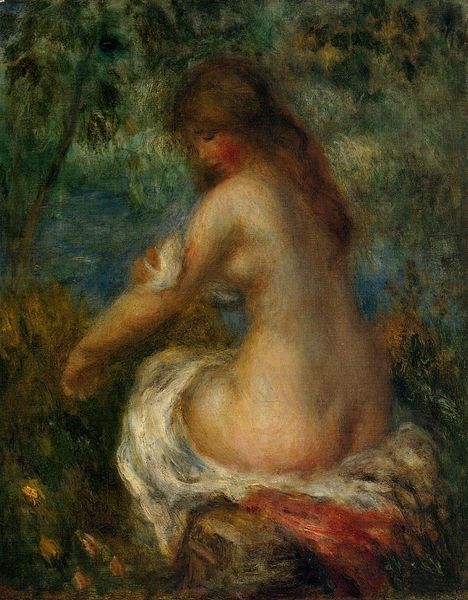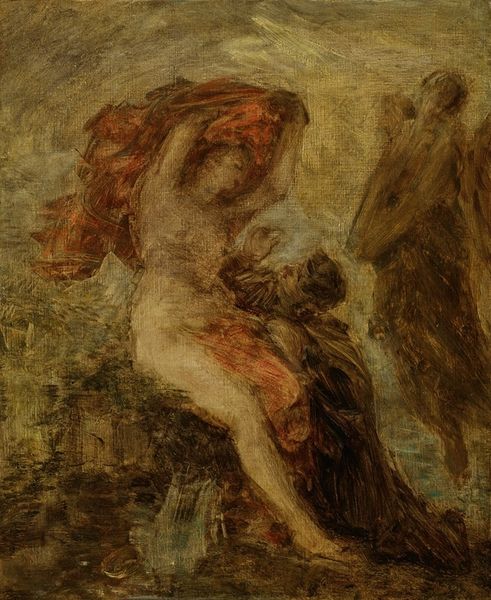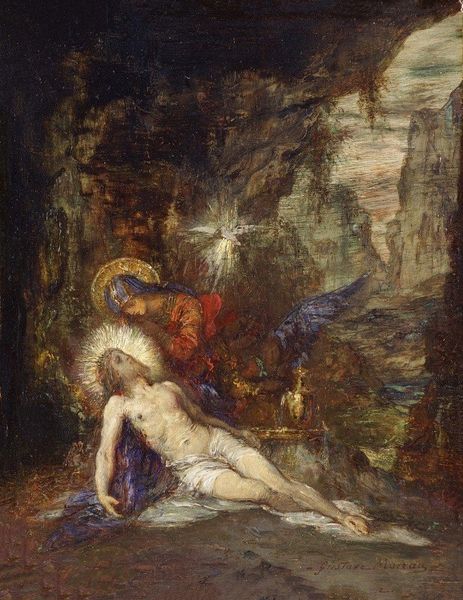
Dimensions: 32.5 x 24.8 cm
Copyright: Public domain
Editor: So, this is Eugène Delacroix's "Andromeda" from 1852. Painted with oils, it definitely gives off a vibe of classical tragedy mixed with... sensuality? There's a vulnerability there, but also a richness in the colours. How do you interpret this work, especially given the context of Romanticism? Curator: It whispers to me of raw emotion, darling. Delacroix, he wasn't just painting a mythological scene, he was baring his soul. Notice the almost violent brushstrokes, especially around the rockface – it's not just paint, it's a storm of feeling. He takes a story as old as time, and throws a melancholic beauty over it. Andromeda isn't just chained, she's surrendering, dreaming perhaps of her impending doom, of her Perseus? He also gives the scene a deeply, almost claustrophobic, eroticism, does he not? The gold cloth highlights her helplessness and vulnerability, but does it also hint at a possible seductive power? Editor: I hadn't really thought about the idea of surrender so much as confinement, or a power that has the potential to grow. But looking again at the soft curve of her neck and how her hair flows down her body, there's a definite acceptance there, too, but with that slight turn in her hand and in her face… do you think he leaves a little door open for the possibility of self-determination? Curator: A delightful idea. Delacroix always liked his paintings to speak with a slight stammer and to ask rather than answer questions! I think you are quite right: that flicker in her fingers might suggest Andromeda isn't simply waiting. What have we learned here then? Editor: That Romanticism is definitely more than just pretty pictures of legends. It is like life: always both more and less than one first suspects. Curator: Exquisite! Absolutely!
Comments
No comments
Be the first to comment and join the conversation on the ultimate creative platform.
